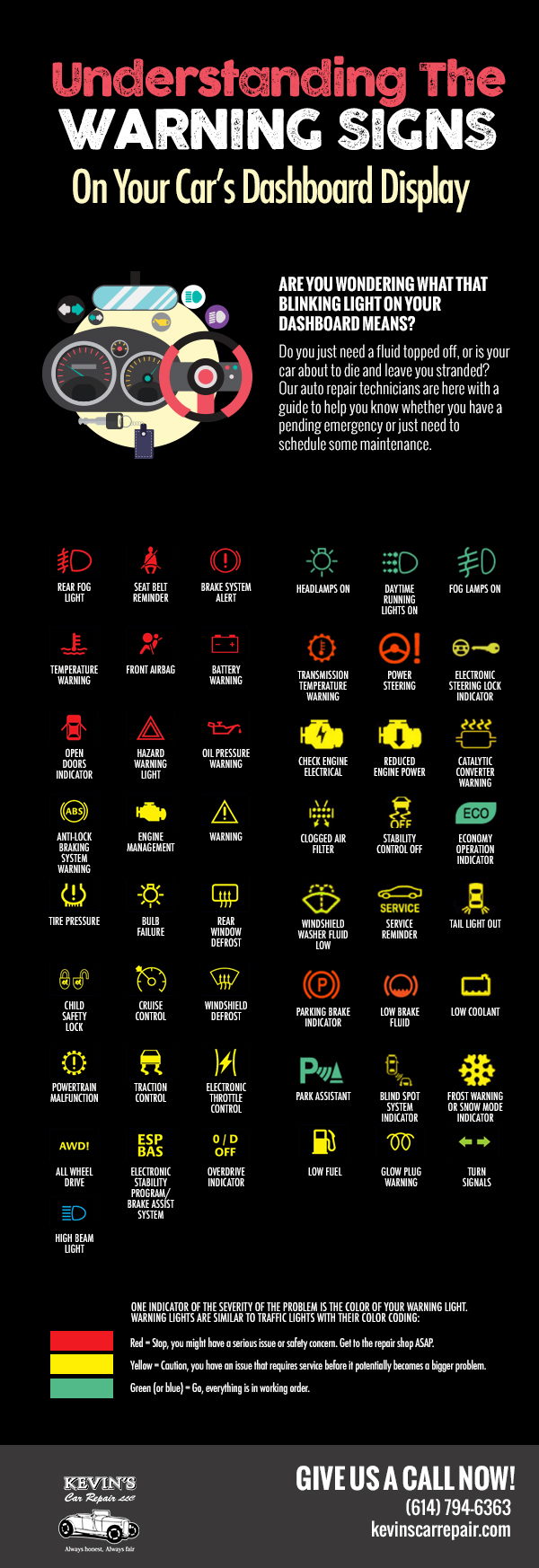When you're behind the wheel, those radiant caution lights on your control panel can be a little bit puzzling. Do you understand what they're attempting to inform you about your cars and truck's health? Recognizing the relevance of these lights is essential for your security and the longevity of your automobile. So, the following time one of those lights pops up, wouldn't you intend to decode its message properly and take the essential steps to address it?
Common Warning Lights and Interpretations
Determine typical caution lights in your automobile and recognize their significances to ensure secure driving.
The most common warning lights include the check engine light, which indicates problems with the engine or emissions system. If this light comes on, it's critical to have your lorry inspected quickly.
The oil pressure warning light indicates reduced oil pressure, requiring prompt interest to avoid engine damage.
A flashing battery light might recommend a defective billing system, potentially leaving you stranded if not attended to.
The tire pressure surveillance system (TPMS) light notifies you to reduced tire stress, impacting automobile stability and fuel performance. Neglecting mechanic: resurrection can cause unsafe driving conditions.
The abdominal light suggests a problem with the anti-lock stopping system, endangering your capacity to stop rapidly in emergency situations.
Finally, the coolant temperature level alerting light warns of engine getting too hot, which can result in extreme damages if not settled quickly.
Comprehending these typical caution lights will help you address concerns promptly and maintain safe driving problems.
Value of Prompt Attention
Understanding the typical warning lights in your cars and truck is just the very first step; the value of immediately attending to these cautions can not be emphasized sufficient to guarantee your safety and security when traveling.
When a warning light illuminates on your control panel, it's your vehicle's way of interacting a possible concern that needs interest. Disregarding these cautions can bring about much more severe issues down the road, jeopardizing your safety and potentially costing you a lot more in repairs.
Motivate focus to alerting lights can protect against failures and mishaps. As an example, a flashing check engine light could indicate a misfire that, if left ignored, might cause damages to the catalytic converter. Addressing this promptly can save you from a costly repair.
Likewise, a brake system warning light might indicate low brake liquid or worn brake pads, essential elements for your security when driving.
Do It Yourself Troubleshooting Tips
If you discover a warning light on your control panel, there are a couple of DIY fixing tips you can try before looking for professional aid.
The primary step is to consult your car's handbook to recognize what the certain caution light shows. In some cases the problem can be as easy as a loose gas cap triggering the check engine light. Tightening the gas cap might deal with the trouble.
One more typical issue is a reduced battery, which can trigger different advising lights. Inspecting the battery connections for rust and guaranteeing they're safe and secure may repair the issue.
If a caution light lingers, you can try resetting it by separating the car's battery for a few mins and afterwards reconnecting it. Additionally, examining your lorry's fluid degrees, such as oil, coolant, and brake liquid, can help troubleshoot warning lights related to these systems.
Final thought
In conclusion, recognizing your car's caution lights is vital for maintaining your car running smoothly and safely. By without delay resolving these informs and recognizing what they indicate, you can stay clear of pricey repair services and prospective break downs.
Read More Here in mind to consult your automobile's manual for particular information on each advising light and act as necessary to make certain a hassle-free driving experience.
Stay informed, stay risk-free when traveling!
